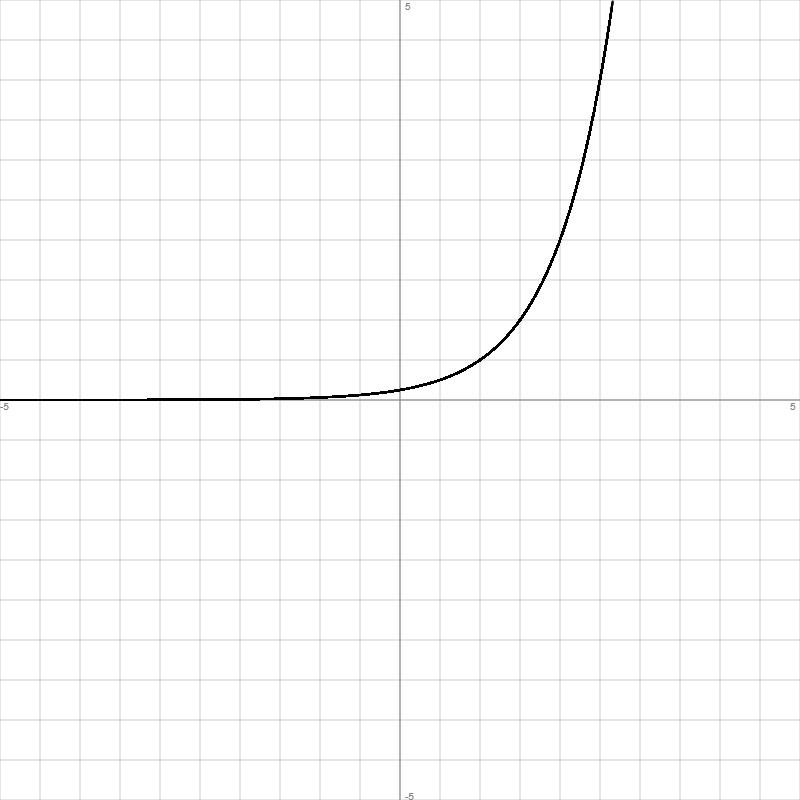
www.michael-buhlmann.de
Funktion: f(x) = 2·4x-2, Df = R, Wf = (0; +∞), reelle Funktion, x -> -∞: f(x) -> 0 = y als Grenzkurve, x -> +∞: f(x) -> +∞ ->
| Wertetabelle: | |||||
| x | f(x) | f'(x) | f''(x) | f'''(x) | Besondere Kurvenpunkte |
| -5 | 0.0001 | 0 | 0 | 0 | |
| -4.5 | 0.0002 | 0 | 0 | 0 | |
| -4 | 0.0005 | 0 | 0 | 0 | |
| -3.5 | 0.001 | 0 | 0 | 0 | |
| -3 | 0.002 | 0 | 0 | 0.01 | |
| -2.5 | 0.0039 | 0.01 | 0.01 | 0.01 | |
| -2 | 0.0078 | 0.01 | 0.02 | 0.02 | |
| -1.5 | 0.0156 | 0.02 | 0.03 | 0.04 | |
| -1 | 0.0313 | 0.04 | 0.06 | 0.08 | |
| -0.5 | 0.0625 | 0.09 | 0.12 | 0.17 | |
| 0 | 0.125 | 0.17 | 0.24 | 0.33 | Schnittpunkt Sy(0|0.13) |
| 0.5 | 0.25 | 0.35 | 0.48 | 0.67 | |
| 1 | 0.5 | 0.69 | 0.96 | 1.33 | |
| 1.5 | 1 | 1.39 | 1.92 | 2.67 | |
| 2 | 2 | 2.77 | 3.84 | 5.34 | |
| 2.5 | 4 | 5.55 | 7.69 | 10.67 | |
| 3 | 8 | 11.09 | 15.37 | 21.34 | |
| 3.5 | 16 | 22.18 | 30.75 | 42.69 | |
| 4 | 32 | 44.36 | 61.5 | 85.37 | |
| 4.5 | 64 | 88.72 | 123 | 170.75 | |
| 5 | 128 | 177.45 | 245.99 | 341.49 | |
| Graph: | |||||
 | |||||
Abkürzungen: Df = (maximaler) Definitionsbereich, f(x) = Funktion, f'(x) = 1. Ableitung, f''(x) = 2. Ableitung, f'''(x) = 3. Ableitung, H = Hochpunkt, L = Lücke, N = Nullstelle, P = Polstelle, R = reelle Zahlen, S = Sprungstelle, T = Tiefpunkt, W = Wendepunkt, WS = Sattelpunkt, Wf = Wertebereich, {.} = ein-/mehrelementige Menge, [.; .] = abgeschlossenes Intervall, (.; .) = offenes Intervall, [.; .), (.; .] = halboffenes Intervall, ∞ = unendlich.
Bearbeiter: Michael Buhlmann